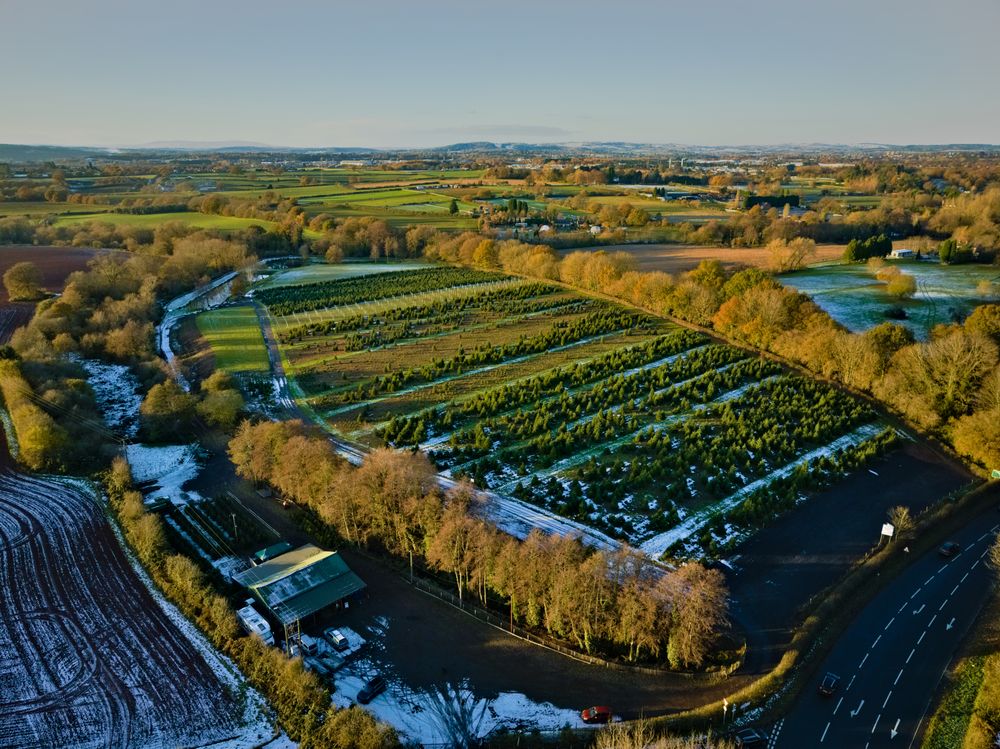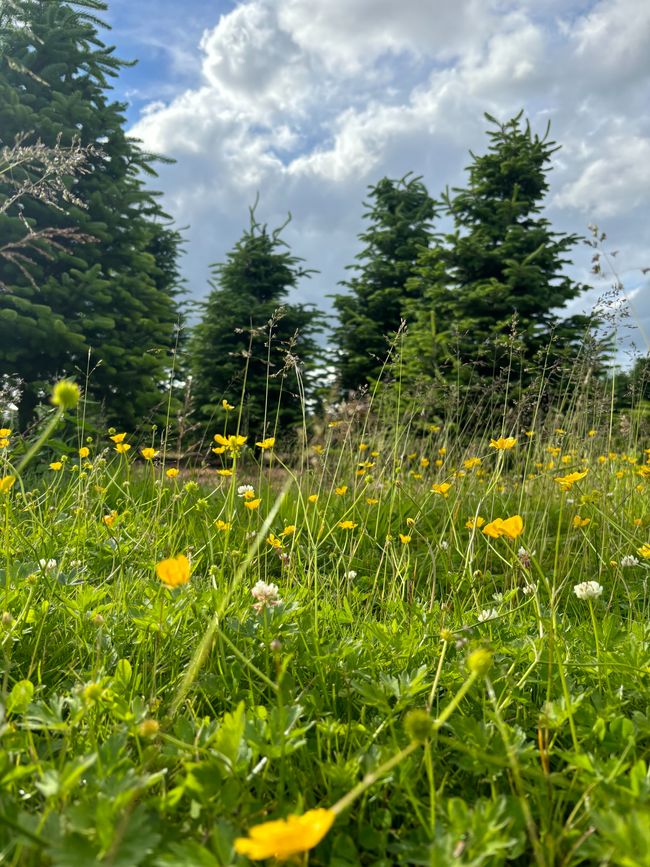Pinewood Trees
Environment
Our Commitment to the Environment
Caring for the Land We Call Home
At Pinewood we farm on a loamy soil structure, with sandy loam in some areas. Compared to the heavy clay soil we have back in Herefordshire, it’s fantastic to work with, though it does have disadvantages.
With two streams and two ponds on the plantation, the topsoil was prone to runoff, which caused the waterways to become heavily silted over time, creating poor habitats for aquatic life. Our Christmas tree root systems now bind the soil together, stabilising it and reducing runoff.
Each time a tree is harvested, a new tree is planted beside it, leaving the old root to decay. This not only improves soil health but also creates food and shelter for insects. With so many mature root systems established, we’ve been able to clear years of silt from the streams — much to the delight of ducks who now float happily into the ponds!

A Haven for Wildlife
Creating Space for Nature to Thrive
With around 50,000 trees, Pinewood is in effect a low-level woodland, providing a safe habitat for countless insects, birds and mammals. To better understand our birdlife, Harper Adams University set up recording units that captured birdsong at sunrise for several weeks, giving us fascinating insight into the diversity of species living here.
We look forward to running this again in quieter months, without the interruption of pond restoration work, to gather even clearer results.

Restoring Our Ponds
Bringing Water Habitats Back to Life
-
Summer 2021
We began by clearing windblown, diseased and dead trees around the ponds. The timber was ethically chipped into biomass. With up to 8ft of silt in the first pond, we carefully pumped out the water, moved fish safely, and brought in conservation contractors to restore the pond to health.
-
Spring 2022
The surrounding ground was cultivated and sown with a native UK wildflower mix. Within weeks, the area burst into vibrant colour, attracting butterflies, dragonflies and other pollinators.
-
Summer 2022
We tackled the second pond ourselves. Though it took longer than planned, the result was another clean pond with fresh water flowing through it. Native wildflowers are set to be sown in Spring 2023 to complete the project.
-
Winter 2024
Native hardwood trees were planted. These young trees will help strengthen local biodiversity, provide habitats for wildlife, and contribute to long-term carbon capture on the plantation.
Beyond the Ponds
Building a Richer, More Diverse Plantation
-
Creating Colourful Habitats
We’ve sown wildflower meadows, planted new hedgerows of blackthorn and hawthorn, and added grassland to support pollinators and shelter wildlife. These areas bring vibrant colour to the plantation while providing food and cover for countless insects and small animals.
-
A Home for Woodland Creatures
Our trees don’t just benefit insects and birds — larger animals such as fallow deer, muntjac, foxes and rabbits can regularly be seen here. The plantation has become a safe space where these creatures can thrive alongside our Christmas trees.
-
Studying Carbon in Our Soils
We’re working with Harper Adams University on a soil sequestration study to measure how carbon is stored within our plantation. This important research helps us manage the land sustainably and ensure healthy soils for the future.
-
A Better Land for Tomorrow
Caring for this beautiful part of Worcestershire is at the heart of what we do. Every project — from pond restoration to planting wildflowers and hedgerows — has been funded directly by Pinewood Christmas Trees, with the aim of leaving the land in better condition for generations to come.